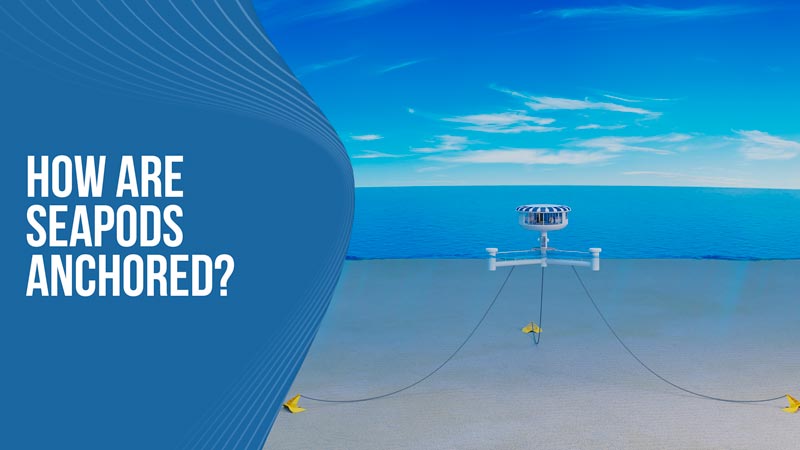
Greetings, fellow adventurers of the SeaPod life! Today, let’s explore how the anchoring system keeps our floating havens stable amidst the rolling waves.
Firstly, it’s relevant to note that SeaPods come equipped with various models of bases, each tailored to suit different aquatic environments. One prevalent model is the tripod base, characterized by three arms extending outward.
Imagine, beneath the shimmering surface lies a sturdy tube extending from the center of the SeaPod to its outer edges. Attached to this tube are three robust spars, strategically positioned to provide stability against the ebb and flow of the ocean currents.
Two-thirds along the length of this underwater tube, a chain descends toward the seabed below. This chain serves as the lifeline, anchoring the SeaPod firmly in place amidst the shifting tides.
Now, why the emphasis on three anchors? Well, it’s all about maximizing stability. With just one anchor, the SeaPod would be at the mercy of every fluctuation in the current, prone to spinning like a compass needle gone astray. Even with two anchors, there’s still a risk of swaying back and forth along a single axis.
Enter the design of three separate anchors. By distributing the anchoring points, the SeaPod gains a remarkable degree of stability, minimizing its range of motion to mere meters. Whether it’s yawing gently to the left or drifting gracefully to the right, the SeaPod remains anchored firmly in place, unfazed by the whims of the ocean.
And there you have it, fellow SeaPod enthusiasts! A glimpse into the smart engineering that ensures our SeaPods stay grounded amidst the vastness of the sea. Watch the following video featuring CEO, Grant Romundt as he addresses this question directly from the SeaPod.
Until next time, may your adventures be as boundless as the ocean itself!














